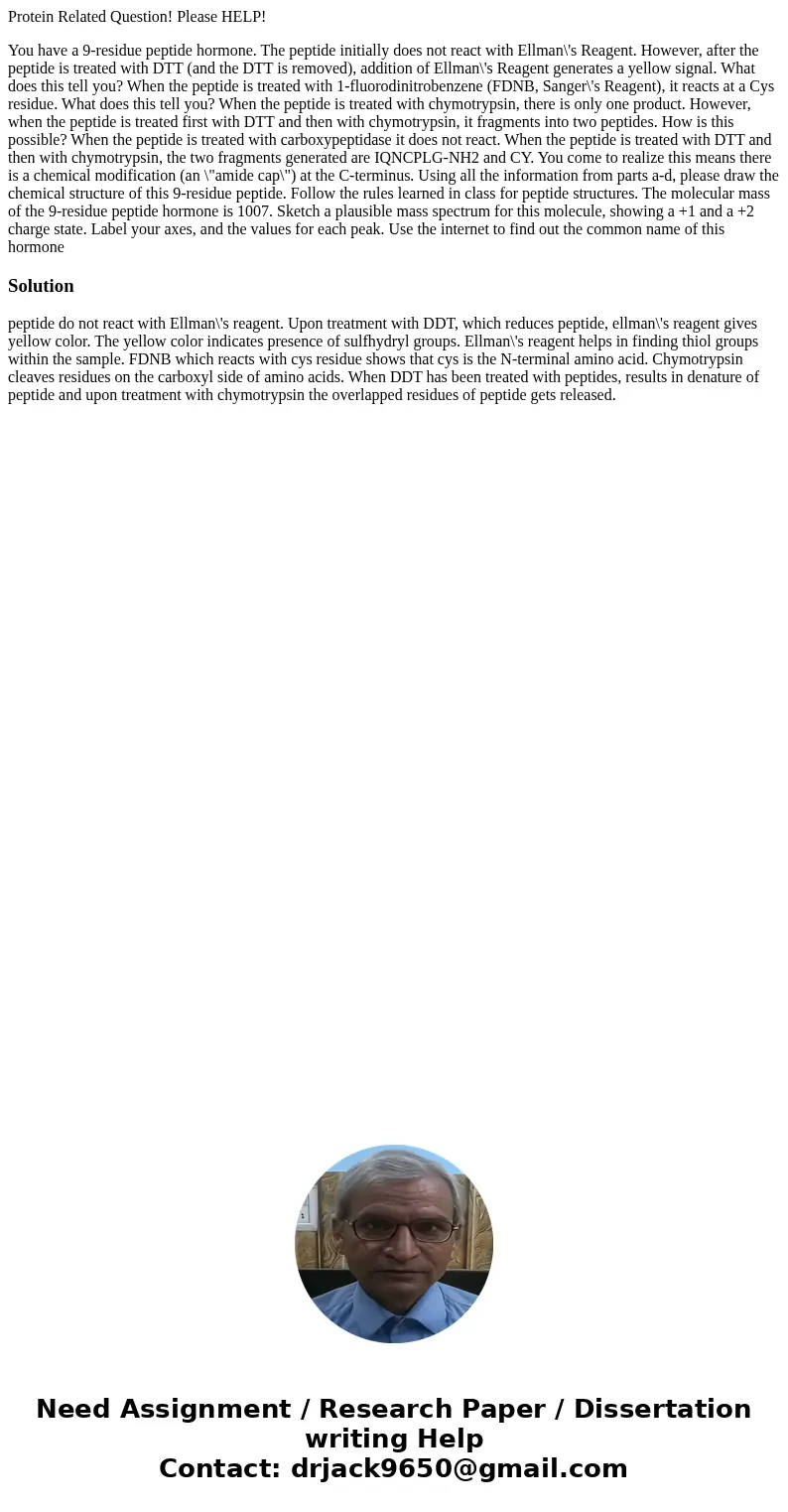Protein Related Question Please HELP You have a 9residue pep
Protein Related Question! Please HELP!
You have a 9-residue peptide hormone. The peptide initially does not react with Ellman\'s Reagent. However, after the peptide is treated with DTT (and the DTT is removed), addition of Ellman\'s Reagent generates a yellow signal. What does this tell you? When the peptide is treated with 1-fluorodinitrobenzene (FDNB, Sanger\'s Reagent), it reacts at a Cys residue. What does this tell you? When the peptide is treated with chymotrypsin, there is only one product. However, when the peptide is treated first with DTT and then with chymotrypsin, it fragments into two peptides. How is this possible? When the peptide is treated with carboxypeptidase it does not react. When the peptide is treated with DTT and then with chymotrypsin, the two fragments generated are IQNCPLG-NH2 and CY. You come to realize this means there is a chemical modification (an \"amide cap\") at the C-terminus. Using all the information from parts a-d, please draw the chemical structure of this 9-residue peptide. Follow the rules learned in class for peptide structures. The molecular mass of the 9-residue peptide hormone is 1007. Sketch a plausible mass spectrum for this molecule, showing a +1 and a +2 charge state. Label your axes, and the values for each peak. Use the internet to find out the common name of this hormoneSolution
peptide do not react with Ellman\'s reagent. Upon treatment with DDT, which reduces peptide, ellman\'s reagent gives yellow color. The yellow color indicates presence of sulfhydryl groups. Ellman\'s reagent helps in finding thiol groups within the sample. FDNB which reacts with cys residue shows that cys is the N-terminal amino acid. Chymotrypsin cleaves residues on the carboxyl side of amino acids. When DDT has been treated with peptides, results in denature of peptide and upon treatment with chymotrypsin the overlapped residues of peptide gets released.
 Homework Sourse
Homework Sourse